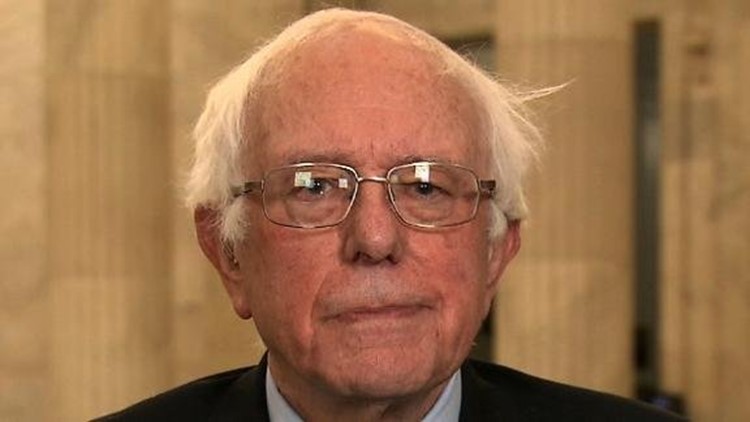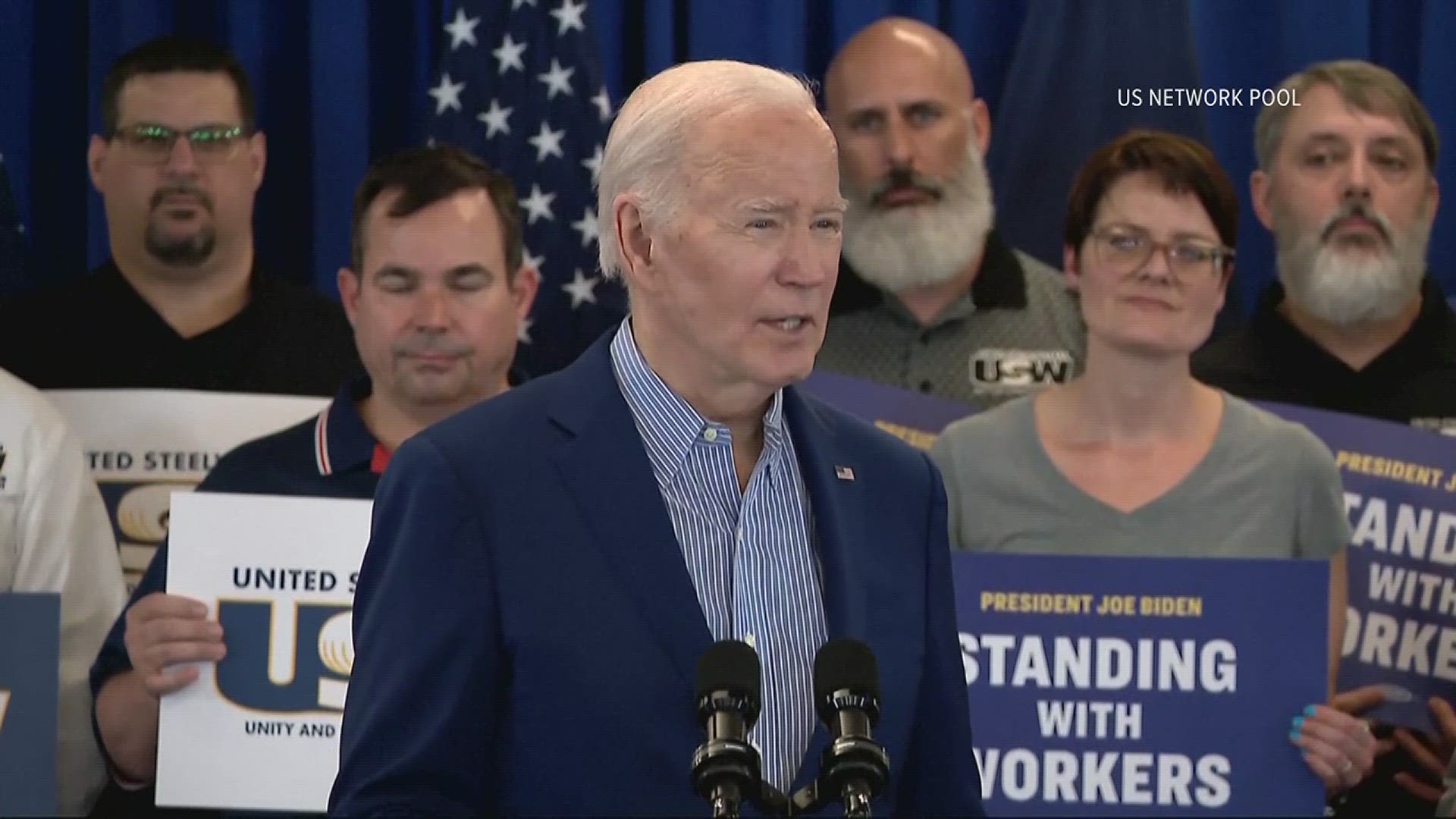(CNN) — Sen. Bernie Sanders on Thursday night returned to Iowa — and the fiery form that characterized his last presidential bid — at his first campaign event since a pair of homecoming rallies last weekend in Brooklyn and Chicago.
“Iowa, you helped begin the ‘political revolution’ in 2016,” Sanders said in Council Bluffs, “and with your help in this campaign, we are going to complete what we started here.”
His three-stop tour of the state, where he came within a whisker of upsetting Hillary Clinton in 2016, will continue Friday in Iowa City before turning back and wrapping up in Des Moines, at the Iowa State Fairgrounds, on Saturday morning.
Sanders has kept in close touch with the first-in-the-nation caucus state since 2016, making appearances in 2017 and most recently, stumping for Democratic candidates a few weeks before the 2018 midterm elections.
Though his 2020 campaign is still in its early stages, Sanders made his Iowa debut this time amid heightened expectations and, perhaps, a more daunting challenge: to distinguish himself in an expansive field of candidates whose messages can bear a striking resemblance to those he preached the last time out — a task that will require both solidifying his devoted base and making inroads where he couldn’t in 2016.
As he did last weekend, Sanders pushed his ambitious agenda, including the expansion of health care to every American, the creation of a universal pre-K system and a hike in the federal minimum wage to $15 an hour. But the Sanders of 2019 also made a point of touting the gains of the past four years.
“When I first came here to campaign in 2015, the truth is that not a whole lot of people knew who the junior senator from Vermont was,” he said. “At that time nobody took our campaign seriously, and we began that campaign at 3% in the polls — and I thank those 3%. Further, the ideas, the agenda, that we were talking about at that time four years ago was considered by establishment politicians and mainstream media to be ‘radical’ and ‘extreme’ — remember that?”
Sanders’ supporters certainly do, and they greeted his rat-a-tat recollection of policies that had gone from “too extreme” to the mainstream of Democratic politics with glee.
“Here’s one more,” Sanders said after running through his agenda: “Imagine ending the power of superdelegates at the Democratic National Convention” — a line he could barely finish before being drowned out by applause.
Sanders, who told the crowd that victory for their cause would require taking on a litany of powerful interests, including “the Republican Party and the establishment Democrats,” made clear he would not tone down or scale back the message that’s made him an early front-runner for the 2020 Democratic nomination.
But even as he has led the party left, Sanders has ground to make up on Iowa’s frozen soil.
Sen. Elizabeth Warren, who effectively began her candidacy at the beginning of January, has already claimed Sanders’ 2016 Iowa caucus director, Brendan Summers. A wave of other high-profile hopefuls have also used the past few weeks to introduce themselves, some going living room to living room to ingratiate themselves to the state’s exacting voters.
Sanders aide Pete D’Alessandro, his Iowa campaign coordinator in 2016 and a senior adviser this time around, sees the advantages in returning now as a better known commodity.
“We’re not inventing a wheel this time, we’re not inventing a campaign,” he said. “We’re starting with a little different view on how to get it done. And we’re not guessing at nearly as many things as we had to guess at last time.”
D’Alessandro, who ran unsuccessfully for the Democratic nomination in 2018’s 3rd Congressional District House primary, said this campaign’s early start — the caucuses are nearly 11 months off — means “it’s just natural that there are more people in play to talk to.”
“We didn’t start this thing last time until May (2015),” he said. “So a lot of people had already made up their mind by then. So you lost a lot of folks that you might’ve been able to talk to.”
In Council Bluffs, Sanders supporters were welcomed by a band that played “Bern Baby Bern” — an original song — and one speaker who noted that Sanders had been fighting for universal health care “longer than I’ve been alive.”
“Sen. Sanders has a good, obviously established network out here. Something to build from. So it’s obviously going to be a different environment from what you saw in 2016,” Troy Price, the state Democratic party chair, told CNN this week. “Everyone here in Iowa knows Bernie Sanders and that gives him an opportunity to go out there and talk to those folks, re-energize some of his folks and build up on that.”
Whether Sanders can grow his base of passionate support is the fundamental question looming over this second presidential campaign. With so many other candidates, many of them well-regarded by progressive Democratic voters, in the race, the raw math suggests it is unlikely he’ll match his 2016 Iowa numbers, when he notched more than 49% in what ended up as a two-horse race with Clinton.
But Sanders’ 2020 bid comes with loftier ambitions — the kind that will be difficult to realize if the race unfolds like it did in 2016.
Al Womble, the Democratic chairman in Iowa’s third congressional district, said he was open to caucusing for the Vermont independent next year, but told CNN he hoped Sanders would first take steps to address lingering post-2016 divisions that “have flared up and down and back and forth and left and right since that whole thing happened.”
“At the end of the 2016 election and 2017 for a little while, there were still some pretty raw nerves there. To deny any sort of role within that situation I think would be a little disingenuous,” Womble told CNN. “I’d like to see Bernie say, ‘Hey, I’m here to appeal to more than just a small base of people and I want to bring people together,” Womble added. “You know, I hope that that’s the message.”
Clinton supporters and the former secretary of state herself have often blamed Sanders, in part, for her eventual loss to President Donald Trump.
“His attacks caused lasting damage,” Clinton wrote in her 2017 post-election memoir, “making it harder to unify progressives in the general election and paving the way for Trump’s ‘Crooked Hillary’ campaign.”
Sanders allies tend to roll their eyes at those suggestions. In response to criticism from former Clinton staffers last month, his campaign pointed out that Sanders held 39 rallies in 13 states for Clinton ahead of the 2016 election, 17 of them during the final week of the race. Sanders in his early remarks has also sought to reassure anxious Democrats that he is committed to backing the party’s nominee, come what may.
“I hope and believe that every Democratic candidate will come together after the nominee is selected and make certain that Donald Trump is not re-elected president of the United States,” Sanders said at a CNN town hall in February. “And I pledge, certainly, to do that. I hope I’m the nominee. But if I am not, I will work with that nominee. Trump has got to be defeated.”
J.D. Scholten, the western Iowa Democrat who nearly ousted GOP Rep. Steve King last year, said Sanders’ political message — one he shared while campaigning alongside Scholten before the midterms — could be a winning one in the region, which broke heavily for Trump in 2016.
“It’s kind of a similar appeal to what Midwesterners saw in Paul Wellstone back in the day and a lot of prairie populism, with Tom Harkin,” Scholten said. “So there’s that commonality there that I think really resonates.”



